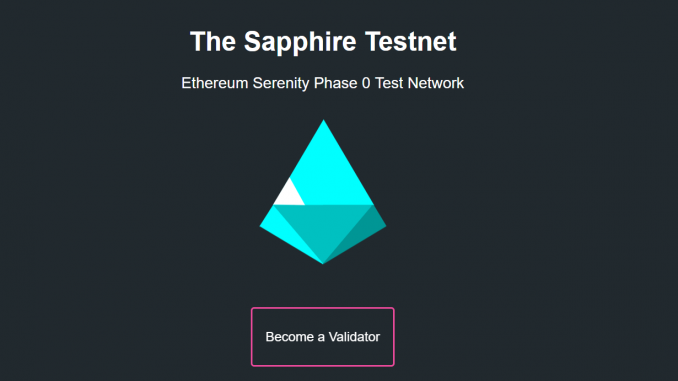Startup developer Prysmatic Labs Preston Van Loon this Tuesday announced the release of a public test network called Sapphire, which uses the zero phase rules of the Ethereum 2.0 protocol.
“This is a nontrivial, critical step to take technology to a new level, and we need you to take part too ,” writes Van Long.
Unlike the main network Ethereum 1.0, where customers such as Parity and Geth are available to users, the Sapphire test network is supported only by the Prysm client.
The most interesting feature of Sapphire is the possibility of stacking ETH test tokens by the Casper Proof-of-Stake method. Users are invited to transfer ETH from the Goerli test network to a new network in order to try themselves as validators. For their actions, they will be able to receive rewards and fines, as in real conditions.
The Sapphire test network is the implementation of the official Ethereum 2.0 zero-phase specifications or Beacon Chain from the Ethereum Research team. The developers note that the network operates according to the approved rules of consensus and is not a simulation.
The test network does not feature smart contracts and other functionality related to the Ethereum virtual machine (EVM) . They will be implemented in the second phase of Ethereum 2.0. The possibilities of the current implementation are reduced to managing the registry of validators, stacking and blockchain formation.
Also, for the current implementation, the developers have established simpler parameters compared to those used in the main network, in particular, with the number of shards and validators. Asset transfers between addresses will be implemented later, as they are not critical to demonstrate the core functionality of the Beacon Chain.
The developers intend to expand the capabilities of the test network on a daily basis and do not plan to restart it until a critical error is discovered that will prevent its further functioning. They also allow scheduled re-launches in the event of significant changes that will require users to update their software.
Publication date 08/05/2019
Share this material on social networks and leave your opinion in the comments below.

